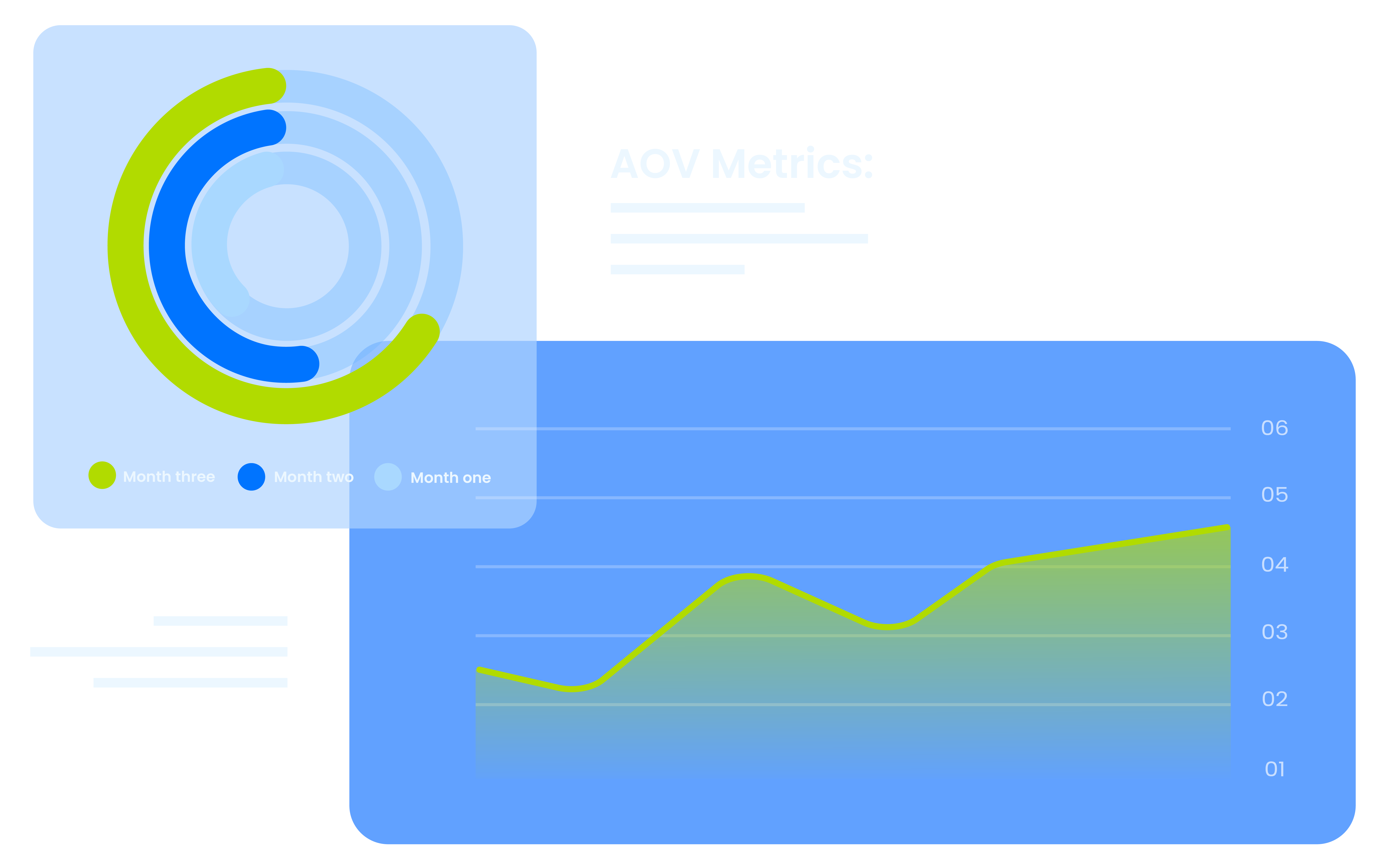Each new customer your business earns is a win, but just how big of a win is it? Will they contribute enough revenue to help your company grow, or will they barely earn out their acquisition cost before churning?
The answer can be found by calculating one business metric: customer lifetime value.
There are several ways for calculating CLTV, each with its own benefits and drawbacks. Learn how you can use these formulas to make informed business decisions and understand if your business model has longevity.
What Is Customer Lifetime Value?
Customer lifetime value (also known as LTV, CLV, or CLTV) is the expected amount a customer will spend with your company while they're a customer. It considers not just the initial purchase but all subsequent purchases. From their first purchase to their last.
Why Is Customer Lifetime Value Important?
When you understand how much a customer is worth over time, you can make smarter decisions about acquisition, retention, and growth.
If your CLTV is too low — especially compared to your customer acquisition cost (CAC) — your business might struggle to stay profitable. That’s why ecommerce brands obsess over the CLTV:CAC ratio.
But it's more than a finance metric. Your CLTV is also essential for understanding other ecommerce metrics that track acquisition and retention. Understanding it helps inform:
- How much you can spend to acquire new customers
- The long-term value of a customer
- High-value customers to target with personalized experiences
- Customer loyalty and retention strategies
- Valuable customer segments to target
- Marketing, customer success, and product development decisions
It’s also easy to understand the importance of reducing churn when you consider it through the lens of CLTV. Keep in mind:
- It costs five to seven times more to attract new customers than to keep existing customers.
- Increasing customer retention rates by 5% increases profits by 25% to 95%, according to research done by Frederick Reichheld of Bain & Company.
- Retention rates have such an outsized impact on your profits because customers who stay around longer have a higher CLTV.

And as privacy laws change how much behavioral data merchants can collect about a customer’s journey, CLTV is arguably the most important metric. It gives you a high-level view of retention, loyalty, and profitability when granular attribution gets muddy.
Five CLV Calculations to Help You Optimize Profitability
There are multiple ways to calculate customer lifetime value, depending on what you want to learn. The calculation will always return an average.
The simpler methods may ignore metrics like CAC, growth ratio, or your average gross margin. However, these calculations can provide enough data to help you make informed business decisions.

Before you can determine customer value, you'll need to gather some other numbers first. The equation you choose will dictate which of the following you'll need:
- Average order value (AOV)
- Average revenue per year (ARPY)
- Customer acquisition cost (CAC)
- Cost of goods sold (COGS)
- Churn rate (CR)
- Customer servicing cost (CS)
- Gross revenue (GR)
- Discount rate (i)
- Customer lifetime (L)
- Number of customers (N)
- Gross profit per sale (P)
- Retention rate (RR)
How Do You Calculate Customer Lifetime Value?
Want to skip the math?
Use the free calculator below to estimate your customer lifetime value. Just plug in a few key numbers — like purchase frequency, lifespan, and costs — and we’ll do the rest.
Need a formula instead? Keep scrolling.
Method 1: Calculate CLTV Using Gross Revenue
CLTV = gross revenue - (customer acquisition cost + customer servicing cost)
Difficulty: Low.
Use this method if: You have high acquisition or servicing costs, or your subscribers only stick around for a few months.
Because this formula puts more emphasis on costs than some others, you’ll likely get a lower CLTV from this calculation. However, it’s typically better to underestimate it than to overestimate it, especially if you spend a lot on acquiring customers or keeping them around.
You can use this formula even if you don’t have enough data to provide a good ballpark of your average customer lifespan. It only requires knowing how much a customer spends with you before they churn. This formula is also useful for companies in acquisition mode because it does factor in those costs.
One weakness of this formula is that it subtracts the customer servicing cost but not the cost of goods sold; therefore, it’s a stronger candidate for SaaS companies than those that deliver physical products.
You may be wondering, how often do you update the averages for this calculation? You should re-figure these numbers at least as often as your customer base turns over. If you don’t know your average customer lifetime, sample a few accounts to get an idea of how long your customers stay. Then, make sure you’re updating each of the metrics used at this frequency for a more accurate calculation.
Method 2: Calculate CLTV Using Average Revenue per Year
CLTV = (average revenue per year x customer lifetime) - customer servicing cost
Difficulty: Low.
Use this method if: Your customers stick around for at least a year and stay at the same price point rather than frequently upgrading or purchasing add-ons.
Unlike the previous method, you’ll need historical data on your customers’ annual spending and average lifetime with your company. Merchants that don’t have at least a year’s worth of data won’t be able to use this formula.
This calculation is suitable in situations where the figures are likely to remain relatively flat year-over-year. Because it uses the customer servicing cost rather than COGS, this is another useful formula for SaaS companies.
You’ll notice CAC is not a part of this formula, which means it’s a better choice for companies that aren’t spending heavily on acquiring new customers.
Merchants that are heavily focused on retention might use this formula, however, as it accounts for the costs you’ll face from serving those customers who stick around.
Method 3: Calculate CLTV Using the Number of Customers
CLTV = (gross revenue - cost of goods sold) / number of unique customers
Difficulty: Low.
Use this method if: Your main customer-related expense is physical goods.
Method 3 is a simple way to determine CLTV, especially if you don’t have reams of historical data.
Because this formula subtracts COGS instead of customer acquisition or servicing costs, it’s best for companies that spend a lot on physical goods.
While SaaS companies may not have to worry about the price of procuring a product to pass on to their customers, product-based subscriptions must account for this substantial expense. In fact, estimating your CLTV without subtracting COGS might give you an incorrect view of your business model’s viability.
A caveat is that this formula only considers expenses related to COGS.
This method is also less likely to show customer lifetime value compared to the average amount of money earned per customer over a set period. Calculating your gross profits requires you to use a time period so you can determine your COGS and gross revenue. You’ll have to count the number of unique customers within this period for an accurate calculation. However, bounding CLTV calculations by a time period will lead to fewer exact numbers because some of your customers’ lifetimes will extend beyond it in either direction.
Method 4: Calculate CLTV Using Average Order Value
CLTV = average order value / churn rate
Difficulty: Low.
Use this method if: You don’t have a lot of customer data or customer-related expenses.
While super simple, this method is also less accurate because it does not consider expenses. Your COGS, CAC, and customer servicing costs need to be taken into account when using CLTV to make decisions, and you’ll have to do that separately if you use this calculation.
Still, this formula is especially useful when you need to make quick calculations. If you’re using CLTV to track customer trends, you’ll be able to get a quick view of your customer base. You can also use this formula as a part of the calculations that have other ways of addressing expenses, such as your CLTV:CAC ratio.
One potential hurdle: This formula only works if your billing periods are standard. It estimates customer lifetime using churn rate or the likelihood that a customer will leave during a given billing period. For instance, a 10% churn rate on a subscription with a one-month billing period looks very different than a 10% churn rate on a subscription with a three-month billing period.
If you offer flexible payment plans (so some customers pay twice a month and some only pay twice a year), this formula won’t return meaningful data.
Method 5: Calculate CLTV Using Margin and Retention Rate
CLTV = (gross profit per sale x (retention rate x (1 + discount rate)) / (1 + discount rate - retention rate)) - customer acquisition cost
Difficulty: Medium.
Use this method if: You want the most precise CLTV calculation (and you’re comfortable with a bit of math).
This is the most advanced CLTV formula and is often taught in MBA programs. It accounts for both customer churn and the time value of money, which means it’s ideal if you’re forecasting revenue over longer time horizons.
It requires different numbers than ones previously discussed.
Gross profit per sale and retention rate should be easy to find.
Discount rate is a bit more complicated. It represents the difference in the value of a dollar today and the value of that same dollar in the future. If you don’t know the appropriate discount rate, you can look up the current Federal Reserve interest rate for short-term loans and use that number.
So, what’s going on in the rest of the formula?
When you multiply your gross profit per sale by the adjusted retention rate, you’re finding the average value of each customer each month (including those customers who churn).
Subtracting your retention rate from 1 plus the discount rate returns your adjusted churn rate. And since dividing 1 by your churn rate gives you the average customer lifetime, dividing your average value per customer per month by your churn rate returns your average lifetime value.
Finally, you subtract CAC from that number so you’re not overstating your CLTV.
If that sounds too complex, stick with one of the earlier methods. But if you’re building financial models or pitching investors, this one gives you the most accurate picture of customer value.
What Formula Should I Use to Find Customer Lifetime Value?
The way you calculate CLTV will affect what decisions you can safely make.
A formula that doesn’t include expenses or only includes some expenses will make your business seem more profitable than it really is.
On the flip side, formulas that include every expense may make it seem like streamlining operations is key to increasing your CLTV, when improving your retention rate will have a greater impact.
Ultimately, it’s up to you to decide which formula you prefer. Just make sure you understand its strengths and weaknesses.
How to Use CLTV to Grow Your Business
Once you know your CLTV, the next step is increasing it.
Here are some proven ways to do just that:
- Leverage upsells, downsells, and cross-sells to create value.
- Increase purchase frequency with timely promos and discounts.
- Keep customers engaged with a consistent, high-value newsletter.
- Build loyalty through subscription models.
- Reduce churn by investing in standout customer support.
- Turn loyal customers into advocates with a referral program.
- Personalize campaigns using behavioral data and preferences.
Dial in these strategies, and your CLTV — and profitability — will follow.



.svg)



